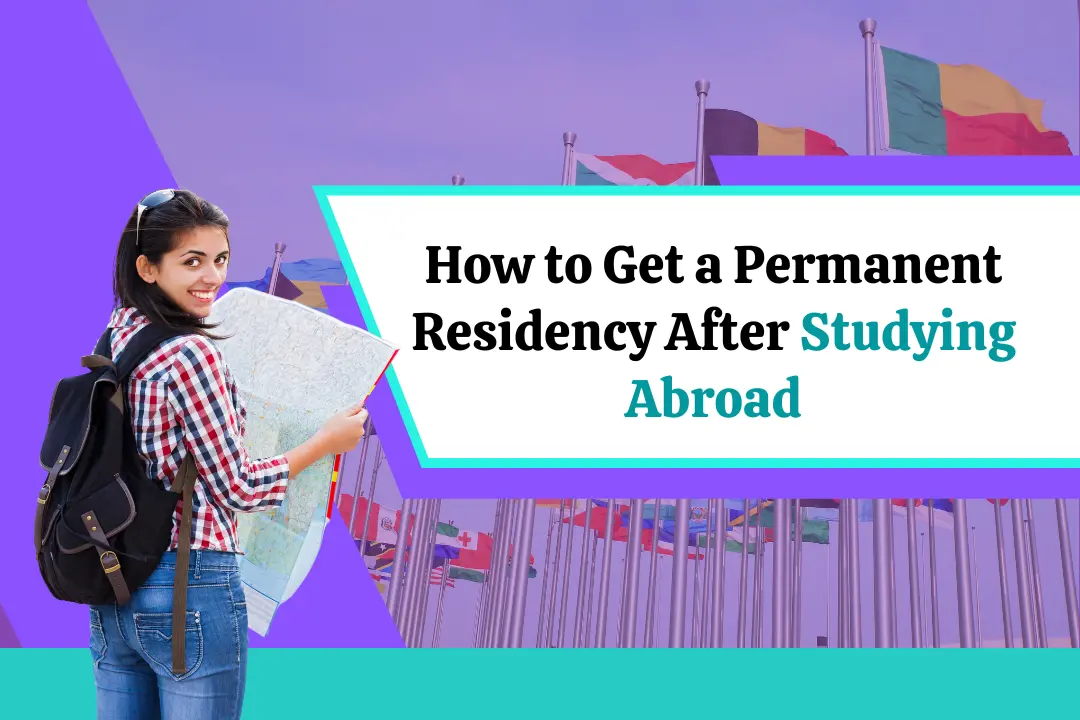How to Get a Permanent Residency After Studying Abroad

How to Get Permanent Residency After Studying Abroad: A Comprehensive Guide
Embarking on an international education journey is a transformative experience, offering not only academic enrichment but also personal growth and exposure to diverse cultures. For many, the dream extends beyond graduation to establishing a permanent home in their host country. Understanding how to navigate the complex landscape of permanent residency (PR) is crucial for international students aspiring to build a future abroad.
This comprehensive guide provides detailed insights into the PR and work permits after studying abroad processes in various popular destinations, offering clarity and direction for your journey.
PR After Study Abroad: The United States
The United States, with its world-renowned universities and vibrant job market, is a prime destination for international students. However, obtaining PR after studying abroad in the US requires careful planning and strategic execution.
Initial Steps
-
Most students begin with an F-1 student visa.
-
After graduation, apply for Optional Practical Training (OPT), allowing work in their field of study for up to 12 months.
-
STEM graduates can extend OPT for an additional 24 months.
H-1B Visa
The H-1B visa is a popular non-immigrant visa allowing US companies to employ foreign workers in specialty occupations.
-
High demand leads to an annual lottery, making it highly competitive.
Employment-Based Green Cards
Several employment-based green card categories are available:
-
EB-1: For priority workers (extraordinary ability, professors, researchers, executives).
-
EB-2: For advanced degree holders or exceptional abilities; National Interest Waiver (NIW) can apply.
-
EB-3: For skilled workers, professionals, and unskilled workers.
Other Pathways
-
Marriage to a US citizen.
-
Asylum for those fearing persecution.
Tip: Strategically planning your career and exploring work permits like the H-1B visa is essential for achieving PR after studying abroad in the United States.
For detailed information on visa types, work permits, and green card options, visit the USCIS official website.
PR After Study Abroad: Canada
Canada‘s welcoming immigration policies and high quality of life make it a favored destination.
Post-Graduation Work Permits (PGWP)
-
Graduates from Designated Learning Institutions (DLIs) can work for up to 3 years after graduation with a PGWP.
Express Entry System
Canada’s Express Entry manages three main federal immigration programs:
-
Canadian Experience Class (CEC): For those with Canadian work experience.
-
Federal Skilled Worker Program (FSW): For skilled workers with foreign experience.
-
Federal Skilled Trades Program (FST): For tradespeople.
Provincial Nominee Programs (PNPs)
-
Provinces like Ontario, British Columbia, and Quebec prioritize graduates.
-
Popular program: Quebec Experience Program (PEQ) (requires French proficiency).
Note: Canada’s emphasis on skilled immigrants and its accessible immigration pathways makes it ideal for securing PR after studying abroad.
(Further reading: International Student Visa for Canada: A Step-by-Step Guide)
PR After Study Abroad: The United Kingdom
The United Kingdom offers a blend of academic excellence and cultural richness.
Graduate Route
-
Complete a degree at a recognized UK higher education provider.
-
Stay for 2 years (or 3 years for PhD graduates) under the Graduate Route.
Skilled Worker Visa
-
Requires sponsorship from a UK employer meeting specific skill and salary requirements.
Indefinite Leave to Remain (ILR)
-
Reside in the UK for 5 continuous years on a qualifying visa.
-
Must meet English language requirements and pass the Life in the UK Test.
Long Residence
-
10 years of legal stay in the UK qualifies for PR under long residence.
Tip: Securing a work permit and planning immigration pathways is crucial.
(Explore: Complete Guide to British Student Visa Requirements for Indian Students in 2025)
PR After Study Abroad: Australia
Australia‘s high quality of life and strong economy attract students globally.
Temporary Graduate Visa (Subclass 485)
-
Live, work, and study temporarily after graduation.
Skilled Migration
Australia’s points-based skilled migration system assesses:
-
Age, education, English proficiency, work experience.
Key visas:
-
Skilled Independent Visa (Subclass 189)
-
Skilled Nominated Visa (Subclass 190)
-
Skilled Regional Visa (Subclass 491)
Employer-Sponsored Visas
-
Employer Nomination Scheme (Subclass 186) offers a permanent option.
Strategy: Focus on gaining work experience, language proficiency, and understanding skilled migration requirements.
PR After Study Abroad: New Zealand
New Zealand, known for its natural beauty, offers various immigration options.
Post-Study Work Visa
-
Up to 3 years depending on qualification.
Skilled Migrant Category
-
A points-based system focusing on age, qualifications, experience, and English proficiency.
Green List Visa
-
Streamlined PR for those in high-demand occupations.
Advice: Strategic planning and understanding the points system are essential.
PR After Study Abroad: Germany
Germany‘s strong economy makes it attractive for students seeking PR.
Residence Permit for Job Seekers
-
18-month visa to seek employment.
EU Blue Card
-
For jobs meeting salary threshold (€45,000+).
Permanent Residence Permit
-
After 21-33 months (faster with German language proficiency).
Fast-Track Options
-
Available for German university graduates and spouses of German citizens.
PR After Study Abroad: France
France combines rich culture with academic opportunities.
Temporary Resident Permit (APS)
-
12-month permit to seek employment/start a business.
Work Visa
-
After securing employment.
Permanent Residency
-
After living in France for 5 years.
Bonus: Marriage to a French national accelerates PR eligibility.
PR After Study Abroad: Ireland
Ireland offers a thriving economy and welcoming atmosphere.
Third Level Graduate Scheme
-
Stay to seek employment post-graduation.
Work Permits
-
General Work Permit.
-
Critical Skills Employment Permit (faster PR eligibility).
Long-Term Residency
-
Reside legally for 5 years to apply.
For more information on work visas and permanent residency options in Ireland, visit the Irish Immigration and Naturalization Service.
PR After Study Abroad: Other European Countries
Explore options beyond Germany and France:
-
Netherlands: 5 years residence, pass integration exams.
-
Sweden: 48 months of work permits required.
-
Denmark: 8 years of legal residency.
-
Switzerland: 10 years for most, 5 years for EU/EFTA citizens.
-
Finland: 4 continuous years of residency.
Tip: Research each country’s specific PR requirements carefully.
PR After Study Abroad: Advanced Asian Countries
Explore Asian giants:
-
Japan: 10 years of continuous residence.
-
South Korea: 5 years with employment post-study.
-
Singapore: PR easier for Student Pass holders completing national exams.
-
Hong Kong: 7 continuous years of lawful residence.
-
Taiwan: No criminal record, economic contributions.
External Source: Japan Immigration Services Agency
Final Word
The journey to obtaining PR after studying abroad is complex but achievable with careful planning, diligent effort, and expert guidance. By understanding specific immigration requirements, exploring various pathways, and leveraging available resources, international students can successfully transition to permanent residency.
Start planning early, stay informed about policy changes, and seek advice from qualified immigration professionals to maximize your chances of success.









